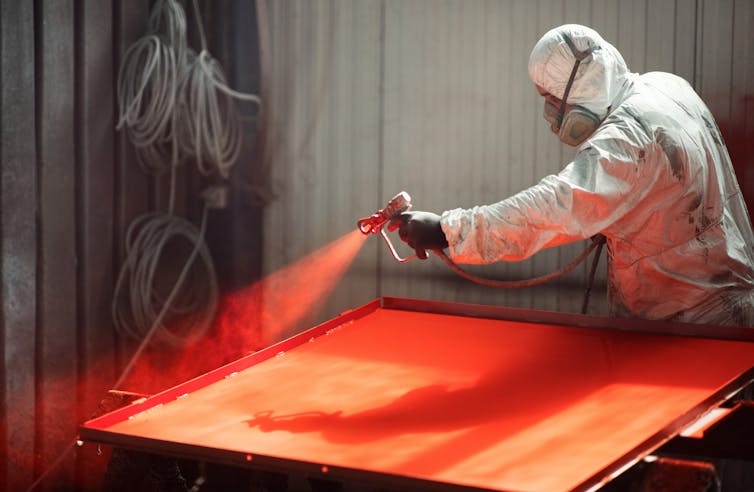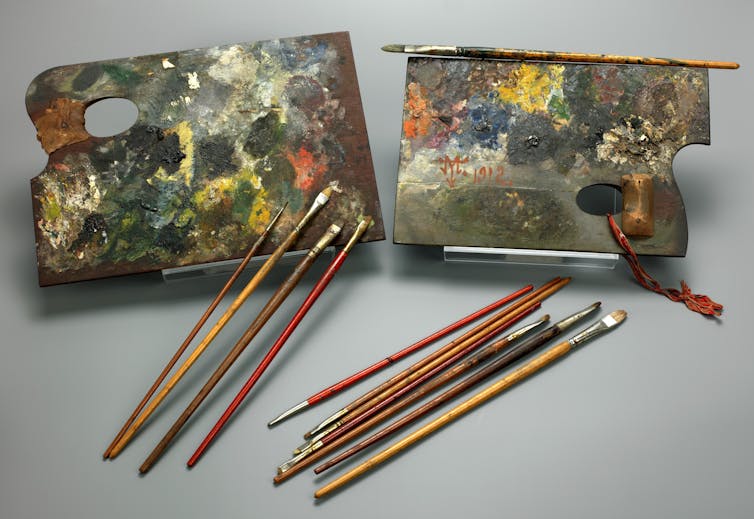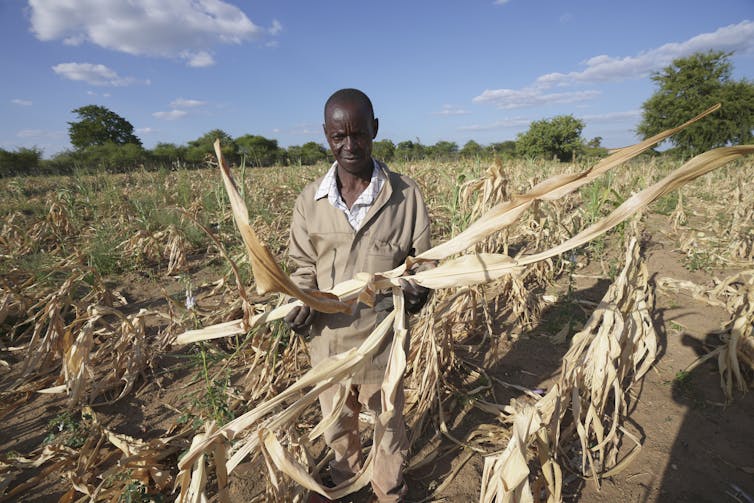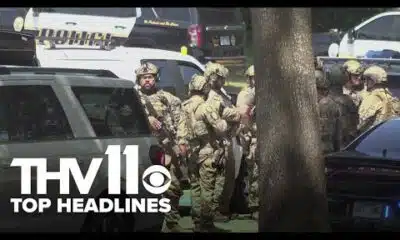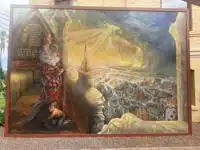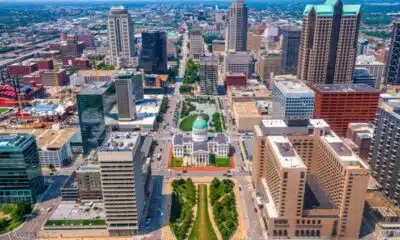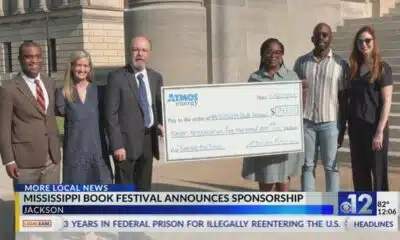
Kirby Lee/Getty Images
Vanessa Crossgrove Fry, Boise State University
Los Angeles is reeling after fires of historic proportions raced through many communities in January 2025, destroying thousands of homes. The Conversation U.S. asked Vanessa Crossgrove Fry, an associate research professor and director of the Idaho Policy Institute at Boise State University, and an expert on sustainable management and nonprofit administration, to explain what role nonprofits can play in staving off disasters and dealing with them when and after they occur.
What’s the role of nonprofits when disasters strike?
They play a critical role by complementing government efforts and filling gaps in immediate and long-term recovery needs.
Collaboration is a hallmark of how nonprofits respond to disasters. These organizations often work alongside government agencies and private sector partners in coordinated efforts. This approach ensures that aid is distributed efficiently, directing resources where they are needed most.
Often, national groups lead efforts to establish emergency shelters, distribute food and water, and offer mental health support. In a best-case scenario, these large organizations partner with local nonprofits that are uniquely positioned to mobilize quickly, leveraging their deep understanding of community needs and established trust with residents.
In some disasters, especially large ones like the Lahaina, Hawaii, fire in 2023, nonprofits also act as coordinators. They make sure that volunteers, donations and other resources flow to people who need help.
Nonprofits’ flexibility and community-based networks enable them to respond to local challenges, such as supporting displaced families or addressing unmet needs in underserved areas. Beyond immediate relief, many nonprofits remain involved in long-term recovery efforts, assisting with rebuilding homes, restoring livelihoods and fostering community resilience.
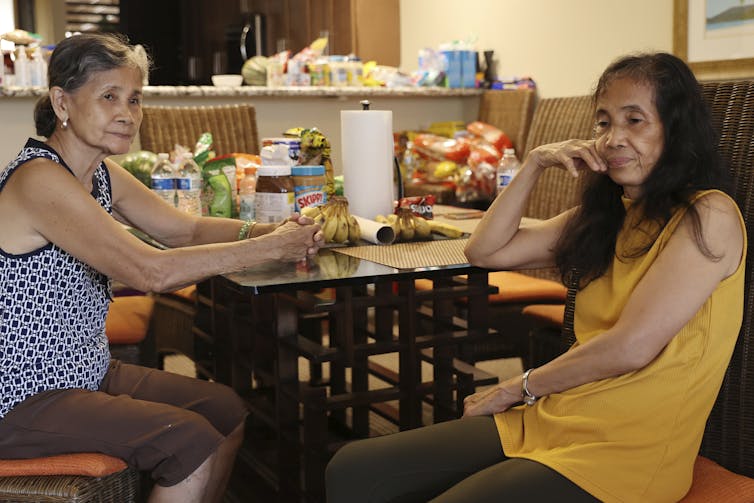
AP Photo/Marco Garcia
What do nonprofits do before disasters occur?
Nonprofits play a crucial role in disaster preparedness by working to reduce risks and build resilience.
In fire-prone regions like the Los Angeles foothills, organizations often focus on educating the public, helping residents understand fire risks and creating evacuation plans. They also implement fire mitigation strategies, such as spreading awareness about the importance of clearing brush and replacing wooden roofs.
Nonprofits also run community training programs, such as CPR certification or Community Emergency Response Team – CERT – training, or Sound the Alarm events to empower residents to respond effectively during emergencies.
With CERT training, a local fire department might equip volunteers to prepare for the hazards they’re likely to face in their communities. That kind of exercise empowers them with essential disaster-response skills, including fire safety and light search and rescue know-how. During Sound the Alarm events, smoke detectors are installed in vulnerable communities and residents get help creating evacuation plans.
Partnerships with government agencies, private companies and other nonprofits should ideally be in place before a disaster occurs to ensure a coordinated response when the time comes.
For example, nonprofits may establish agreements about setting up emergency shelters or accessing and distributing food supplies. They also build networks to ensure vulnerable populations – such as low-income residents, people experiencing homelessness, and those with disabilities – are included in disaster planning and response efforts.
Other roles include advocating for more funding for disaster preparedness and infrastructure, like wildfire-resistant construction or community-wide firebreaks – areas of cleared vegetation.
In some cases, nonprofits may help coordinate the use of government resources. For instance, Idaho Department of Insurance Director Dean Cameron recently drafted a bill that’s pending in the Idaho Legislature that would provide funding for homeowners to make fire mitigation upgrades on their property.
Additionally, nonprofits often develop detailed contingency plans for their own operations so they can continue to deliver services during a crisis.
Through these proactive measures, nonprofits help communities prepare for the worst while fostering resilience that can temper the long-term impacts of disasters.
What does the situation in LA have in common with what happens in Idaho?
Los Angeles and Idaho might seem worlds apart, but when it comes to handling disasters like wildfires, they face surprisingly similar challenges.
Both places grapple with dry seasons, rising temperatures and increasing invasive vegetation that amplify wildfire risks. Climate change is exacerbating these conditions, making fires more frequent and intense.
In Los Angeles, urban sprawl has expanded development into fire-prone areas, known as the wildland-urban interface. Similarly, Idaho has seen increased development in the wildland-urban interface surrounding Boise – where the population is surging.
This type of growth poses significant risks to both homes and lives as seen in Idaho’s 2016 Table Rock Fire and the more recent 2024 Valley Fire.
In addition, wildfires in Idaho’s forested and rural areas put not only people and infrastructure at risk, but can impact valuable grazing land, as occurred in the 2024 Wapiti Fire.
In both regions, balancing the demand for housing with the need for fire-resilient planning and mitigation measures is a critical challenge.
Another shared concern for nonprofits in Idaho and California is ensuring that vulnerable populations receive enough support during and after disasters. In both urban and rural settings, people experiencing homelessness, low-income families, and those in remote areas may have a lot of trouble evacuating, accessing resources and rebuilding after disasters.
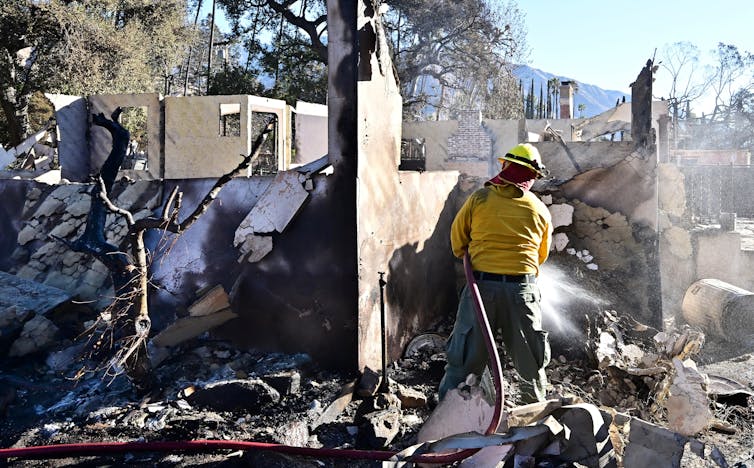
Photo by Frederic J. Brown/AFP via Getty Images
What are some common misconceptions about nonprofits in disasters?
Many people tend to think that nonprofits only provide immediate relief, such as food, shelter or medical care. While these services are critical in the early stages of a disaster, many nonprofits also focus on long-term recovery and rebuilding efforts.
Nonprofits may help communities rebuild homes, restore livelihoods or address emotional trauma months – or even years – after a disaster occurs.
There is also a tendency to overlook the role of local nonprofits. High-profile national organizations often command the public’s attention, but local nonprofits are often better positioned to address community-specific needs and work directly with vulnerable populations.
These misunderstandings can lead to the underfunding – and underappreciation – of local nonprofits.
Should people still donate to established organizations?
There are more ways to give to people experiencing a crisis than there used to be.
You might hesitate to donate to large nonprofits after a big disaster like the Los Angeles fires, for several reasons. Maybe you’re concerned about transparency or the group’s effectiveness. It might feel less personal to you than giving money, say, to a GoFundMe campaign.
I think that people should still consider donating to large and established organizations, but I also believe that it’s important to do so thoughtfully. Large nonprofits, such as the American Red Cross or Salvation Army, often have the infrastructure, expertise and logistical capacity to mobilize quickly and scale their operations to address disasters effectively.
These organizations also maintain established relationships with government agencies, local nonprofits and international partners. Those networks facilitate coordinated responses that smaller or newer groups might struggle to achieve.
However, the emergence of giving options, such as crowdfunding platforms, grassroots campaigns and community-based nonprofits, has expanded opportunities for individuals to direct their support to specific causes or populations. These avenues can make a big difference, particularly when donors want to address local or niche needs. Still, newer or less established groups may lack transparency or accountability.
Established organizations tend to have robust financial oversight and accountability systems in place. They are often better equipped to address not only immediate relief needs but also long-term recovery efforts, which smaller or informal groups may not have the capacity to support.
To be sure, it’s always wise to do some research before giving money to a cause of any kind.
Ultimately, the choice depends on your own priorities. Do you want to support immediate relief, contribute to systemic solutions or help a specific community?
By donating to both large organizations and local efforts alike, you can maximize your impact and help ensure everyone in a community gets support. And that’s important, especially after a disaster as big as the Los Angeles wildfires.
Vanessa Crossgrove Fry, Associate Research Faculty/Interim Director, Boise State University
This article is republished from The Conversation under a Creative Commons license. Read the original article.
















